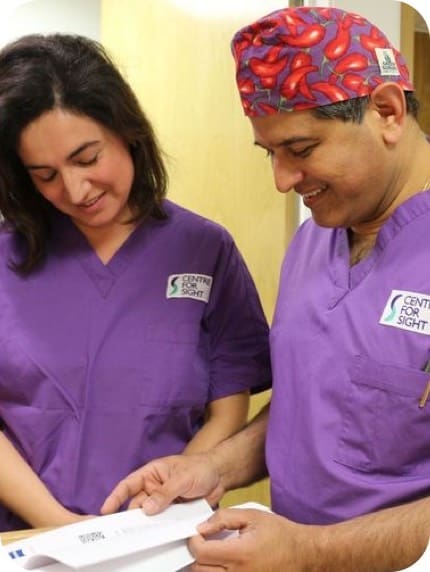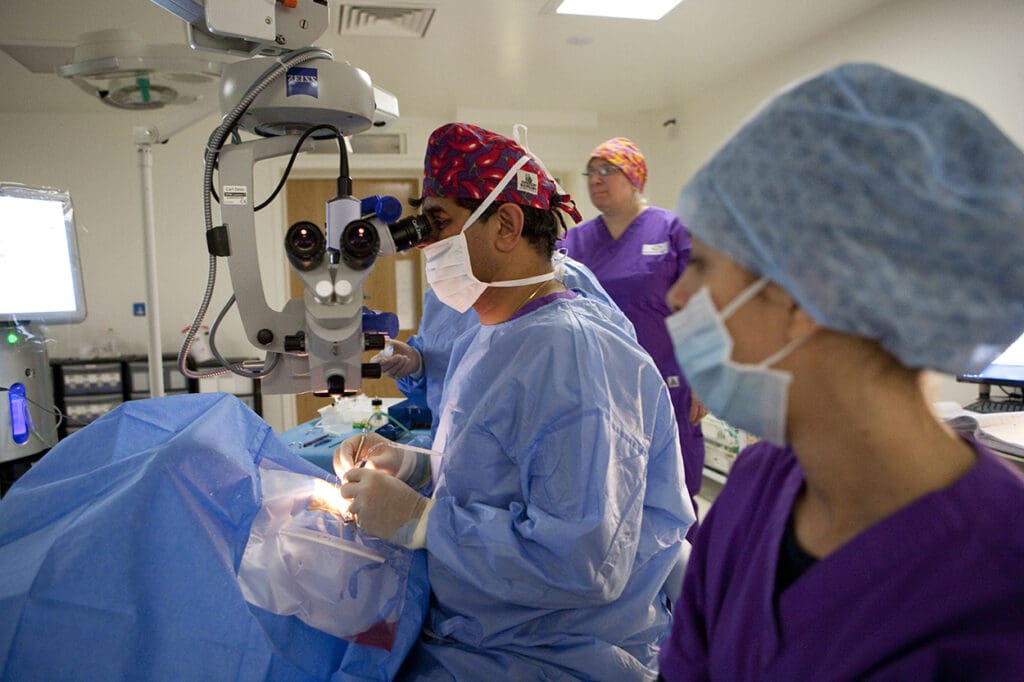Before the actual retinal detachment occurs there is often a tear in the retina. This may present with the following symptoms:
Light flashes, which occurs mainly with jerky eye movements, or in the dark. (Light flashes and dots which occur as a result of fluctuations in blood pressure, for example when standing up or re-erecting after bending, are harmless!)
Semi-transparent streaks that “migrate” with eye movements. These are usually so-called “Mouches volantes” which are annoying but not dangerous, however should always be checked by your consultant ophthalmologist
A “rain of soot”, the perception of a large amount of small black dots or floating particles sinking downwards within your eye
These symptoms can be indicative of the retina being torn. Such a tear in the retina can be “repaired” by means of a laser, similar to a weld – a retinal scar remains and at this position a very small visual field defect that typically stays unnoticed.
When the retina detaches itself in the area of the macula, central vision is compromised: with loss of clarity and detail with only blurred and distorted vision remaining.
Retinal detachment does not cause any pain. Untreated retinal detachment can lead to blindness of the eye affected.
The vitreous body shrinks with increasing age and may lift off the retina. In areas where it is conjoined with the retina, a tear might then develop
Blunt force trauma e.g. an object or a child’s finger bouncing against the eye
Result of a cataract-operation
Inflammatory processes in the choroid membrane, e.g. diabetic retinopathy in cases of diabetes mellitus





